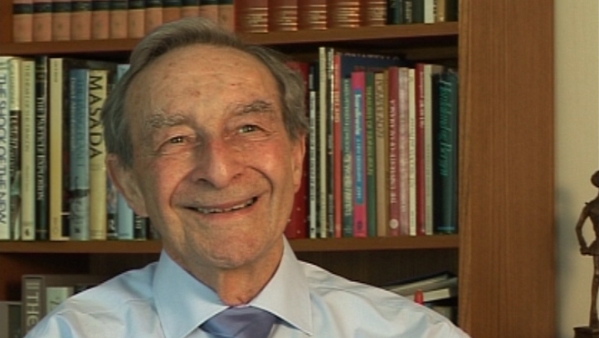NEXT STORY

Work with Ken Wade as my first PhD student
RELATED STORIES

NEXT STORY

Work with Ken Wade as my first PhD student
RELATED STORIES



And in my view, the most astonishing development of chemistry, as a theoretical concept, is the realisation in the 19th century that absolutely every physical thing in the universe is composed of atoms. Whether it is a star or a plant or your brain or the light-producing materials, whatever, it’s composed of atoms. There are only a limited number of atoms, 92 of them… I said 61 before, but now there are known to be 92 in... occurring naturally, and man, as nuclear theory has progressed, has made transuranium elements as well; but sticking with what occurs in nature, there are these 90-odd elements which are all built on a very simple pattern, which we’ll come back to later, I think. But there is a little kernel in the middle called the nucleus which has a positive charge composed, roughly speaking, of protons and neutrons and around that is a cloud of electrons. That’s the model and by following through chemistry and physics you can get the model and, of course, in modern terms, they go deeper and deeper into the atom, but as far as chemists are concerned, that is a huge generalisation which is not, I think, well enough understood by people in general, that everything around them is composed of atoms. And by manipulating atoms one makes new compounds and those new compounds can have new… the colours of flowers – how does the plant make these colours? Anything that you’d like to think of is composed of atoms and one of the important applications of chemistry is to find uses for the things.
Norman Greenwood (1925-2012) was born in Australia and graduated from Melbourne University before going to Cambridge. His wide-ranging research in inorganic and structural chemistry made major advances in the chemistry of boron hydrides and other main-group element compounds. He also pioneered the application of Mössbauer spectroscopy to problems in chemistry. He was a prolific writer and inspirational lecturer on chemical and educational themes, and held numerous visiting professorships throughout the world.
Title: The wonder of atoms
Listeners: Brian Johnson
Professor Brian FG Johnson FRS, FRSE, FRS Chem, FAcad Eu, FAS. Professor of Inorganic Chemistry University of Edinburgh 1991-1995, Professor of Inorganic Chemistry University of Cambridge 1995-2005, Master Fitzwilliam College Cambridge 1999-2005. Research interests include studies of transition metal carbonyls, organometallic chemistry, nano- particles and homogeneous catalysis. Professor Johnson is the author of over 1000 research articles and papers.
Tags: 19th century, atoms, transuranium, nuclear physics, nucleus, chemistry, atom model
Duration: 2 minutes, 18 seconds
Date story recorded: May 2011
Date story went live: 25 November 2011